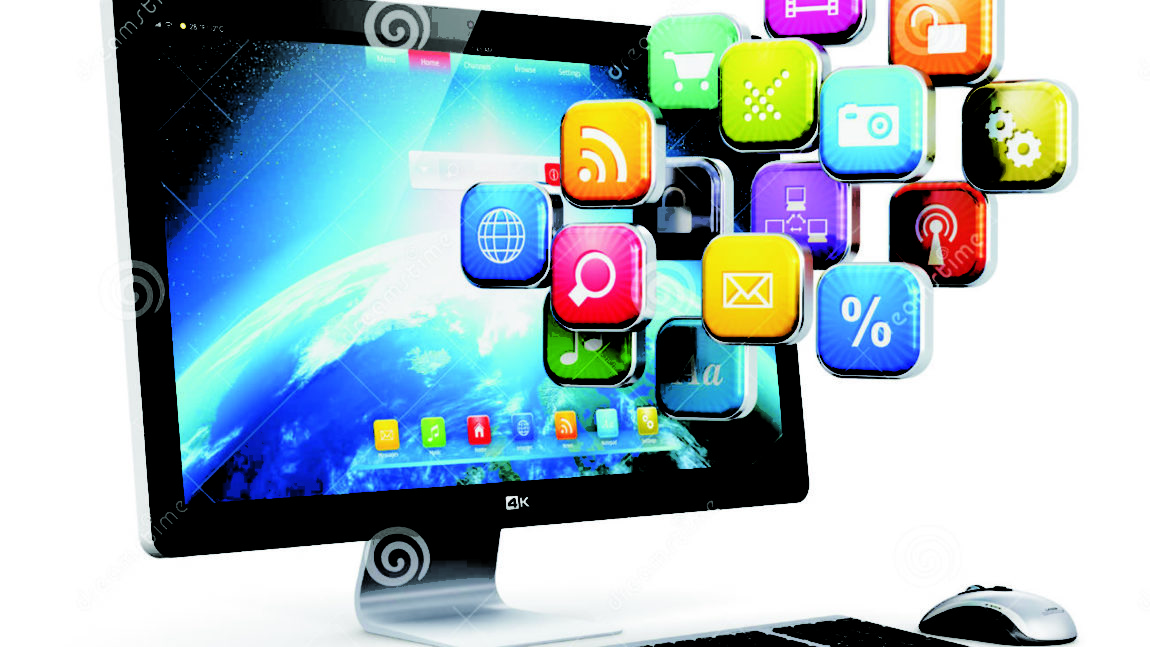COMPUTER APPLICATIONS
CLASS IX (Code 165)
(2020-21)
Learning Outcomes
- Ability to familiarise with basics of computers.
- Ability to navigate the file system.
- Ability to create and edit documents, spreadsheets, and presentations.
- Ability to perform basic data manipulation using spreadsheets
- use Indian languages in documents.
- Ability to send and receive emails, follow email etiquette, and communicate over the internet.
- Ability to create and upload videos.
- Ability to safely and correctly use websites, social networks, chat sites, and email.
Distribution of Marks and Periods
| S. No. | Unit Name | Marks |
| 1 | Basics of Information Technology | 5 |
| 2 | Cyber safety | 10 |
| 3 | Office Tools | 5 |
| 4 | Scratch/Python | 10 |
| 5 | Lab Exercises | 70 |
| Total | 100 |
Unit 1: Basics of Information Technology
- Computer Systems: characteristics of a computer, components of a computer system – CPU, memory, storage devices and I/O devices
- Memory: primary (RAM and ROM) and secondary memory
- Storage devices: hard disk, CD ROM, DVD, pen/flash drive, memory stick
- I/O devices: keyboard, mouse, monitor, printer, scanner, web camera
- Types of software: system software (operating system, device drivers),
application software including mobile applications - Computer networking: Type of networks: PAN, LAN, MAN, WAN, wired/wireless communication, Wi-Fi, Bluetooth, cloud computers (private/public)
- Multimedia: images, audio, video, animation
Unit 2: Cyber-safety
- Safely browsing the web and using social networks: identity protection, proper usage of passwords, privacy, confidentiality of information, cyber stalking, reporting cybercrimes
- Safely accessing websites: viruses and malware , adware
Unit 3: Office tools
- Introduction to a word processor: create and save a document.
- Edit and format text: text style (B, I, U), font type, font size, text colour, alignment of text. Format paragraphs with line and/or paragraph spacing. Add headers and footers, numbering pages, grammar and spell check utilities, subscript and superscript, insert symbols, use print preview, and print a document.
- Insert pictures, change the page setting, add bullets and numbering, borders and shading, and insert tables – insert/delete rows and columns, merge and split cells.
- Use auto-format, track changes, review comments, use of drawing tools, shapes and mathematical symbols.
- Presentation tool: understand the concept of slide shows, basic elements of a slide, different types of slide layouts, create and save a presentation, and learn about the different views of a slide set – normal view, slide sorter view and hand-outs.
- Edit and format a slide: add titles, subtitles, text, background, and watermark, headers and footers, and slide numbers.
- Insert pictures from files, create animations, add sound effects, and rehearse timings.
- Spreadsheets: concept of a worksheet and a workbook, create and save a worksheet.
- Working with a spreadsheet: enter numbers, text, date/time, series using auto fill; edit and format a worksheet including changing the colour, size, font, alignment of text; insert and delete cells, rows and columns. Enter a formula using the operators (+,-,*, /), refer to cells, and print a worksheet.
- Use simple statistical functions: SUM (), AVERAGE (), MAX (), MIN (), IF () (without compound statements); embed charts of various types: line, pie, scatter, bar and area in a worksheet.
Unit 4: Scratch or Python
Alternative 1: Educational programming language – Scratch
- Introduction to Scratch.
- Drag and drop commands, creating simple scripts, repeating blocks of commands.
- Discuss x-y plane, create scripts to move the cat (Scratch mascot).
- Create a script to draw diagrams using the pen feature.
Alternative 2: Python ..
- Programming Basics : Algorithms and Flowcharts
- Characteristics of a good program
- Introduction to Python
- A simple “Hello World” program
- Running a Python program
Lab Exercises
- Browser settings for a secure connection
- Working with the operating system: Navigation of the file system using a mouse and keyboard.
- Word processing: create a text document; create a letter, report, and greeting card.
- Create a text document with figures in it. It should describe a concept taught in another course.
- Discuss the following in a text document about the basic organisation of a computer: CPU, memory, input/output devices, hard disk.
- Create a text document in an Indian language other than English.
- Create a presentation.
- Create a presentation with animation.
- Include existing images/ pictures in a presentation.
- Animate pictures and text with sound effects in a presentation
- Create a simple spreadsheet and perform the following operations: min, max, sum, and average.
- Create different types of charts using a spreadsheet: line, bar, area and pie.
- Write basic Scratch/Python programs.
Breakup of marks for the Practicals:
| S. No. | Unit Name | Marks |
| 1 | Lab Test (30 marks) |
|
| Word processing | 7 | |
| Handling spreadsheets | 7 | |
| Creating presentations | 8 | |
| Writing basic Python/Scratch programs | 8 | |
| 2 | Report File + viva (10 marks) |
|
| Report file • 4 documents each with a word processor, spreadsheet, and presentation tool • At least 4 programs on Scratch/Python |
8 | |
| Viva voce (based on the report file) | 2 | |
| 3 | Project (that uses most of the concepts that have been learnt) (10 marks) |
|
| Tatal Marks | 50 |




Add Comment